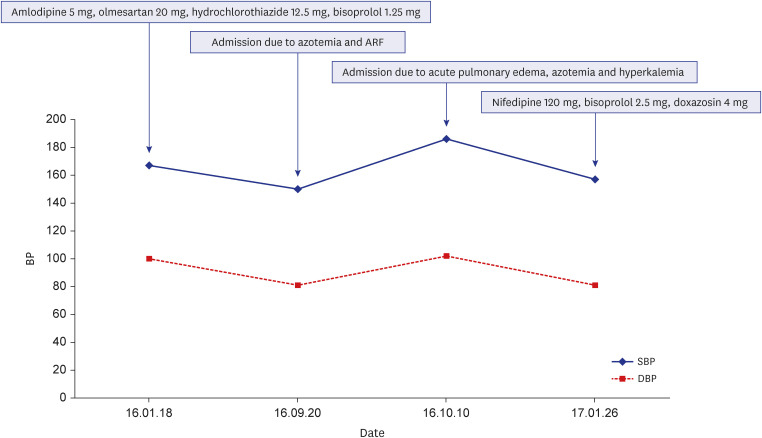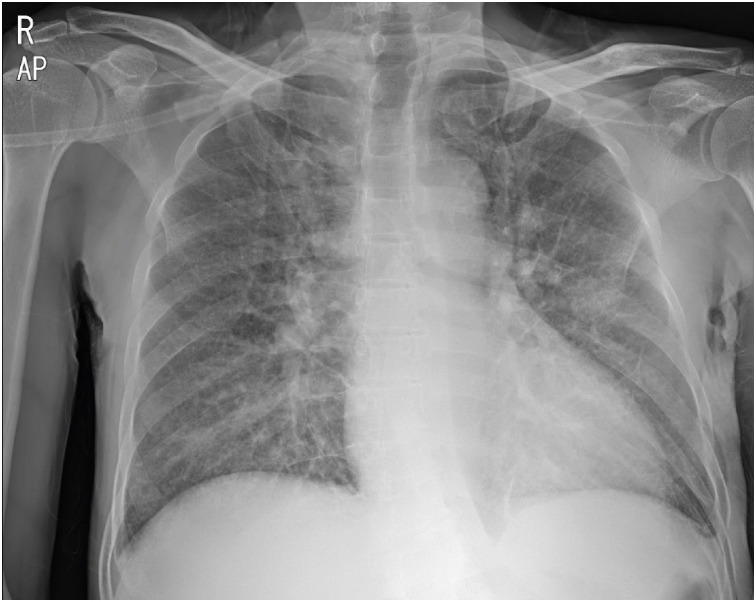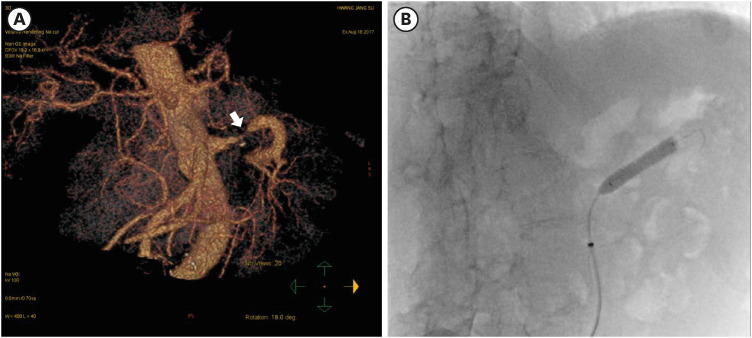J Korean Med Sci.
2023 Mar;38(10):e80. 10.3346/jkms.2023.38.e80.
Case 8: A 58-Year-Old Man Presented With Symptomatic Recurrent Pulmonary Edema
- Affiliations
-
- 1Division of Cardiology, Department of Internal Medicine, St. Vincent’s Hospital, College of Medicine, The Catholic University of Korea, Seoul, Korea
- 2Catholic Research Institute for Intractable Cardiovascular Disease (CRID), College of Medicine, The Catholic University of Korea, Seoul, Korea
- 3Department of Radiology, St. Vincent’s Hospital, School of Medicine, The Catholic University of Korea, Suwon, Korea
- KMID: 2540429
- DOI: http://doi.org/10.3346/jkms.2023.38.e80
Figure
Reference
-
1. Hirsch AT, Haskal ZJ, Hertzer NR, et al. ACC/AHA 2005 practice guidelines for the management of patients with peripheral arterial disease (lower extremity, renal, mesenteric, and abdominal aortic): a collaborative report from the American Association for Vascular Surgery/Society for Vascular Surgery, Society for Cardiovascular Angiography and Interventions, Society for Vascular Medicine and Biology, Society of Interventional Radiology, and the ACC/AHA Task Force on Practice Guidelines (Writing Committee to Develop Guidelines for the Management of Patients With Peripheral Arterial Disease): endorsed by the American Association of Cardiovascular and Pulmonary Rehabilitation; National Heart, Lung, and Blood Institute; Society for Vascular Nursing; TransAtlantic Inter-Society Consensus; and Vascular Disease Foundation. Circulation. 2006; 113(11):e463–e654. PMID: 16549646.2. European Stroke Organisation. Tendera M, Aboyans V, Bartelink ML, Baumgartner I, Clément D, et al. ESC guidelines on the diagnosis and treatment of peripheral artery diseases: document covering atherosclerotic disease of extracranial carotid and vertebral, mesenteric, renal, upper and lower extremity arteries: the Task Force on the Diagnosis and Treatment of Peripheral Artery Diseases of the European Society of Cardiology (ESC). Eur Heart J. 2011; 32(22):2851–2906. PMID: 21873417.3. Hirsch AT, Haskal ZJ, Hertzer NR, Bakal CW, Creager MA, Halperin JL, et al. ACC/AHA 2005 guidelines for the management of patients with peripheral arterial disease (lower extremity, renal, mesenteric, and abdominal aortic): executive summary a collaborative report from the American Association for Vascular Surgery/Society for Vascular Surgery, Society for Cardiovascular Angiography and Interventions, Society for Vascular Medicine and Biology, Society of Interventional Radiology, and the ACC/AHA Task Force on Practice Guidelines (Writing Committee to Develop Guidelines for the Management of Patients With Peripheral Arterial Disease) endorsed by the American Association of Cardiovascular and Pulmonary Rehabilitation; National Heart, Lung, and Blood Institute; Society for Vascular Nursing; TransAtlantic Inter-Society Consensus; and Vascular Disease Foundation. J Am Coll Cardiol. 2006; 47(6):1239–1312. PMID: 16545667.4. Pickering TG, Herman L, Devereux RB, Sotelo JE, James GD, Sos TA, et al. Recurrent pulmonary oedema in hypertension due to bilateral renal artery stenosis: treatment by angioplasty or surgical revascularisation. Lancet. 1988; 2(8610):551–552. PMID: 2900930.5. Chrysochou C, Kalra PA. Epidemiology and natural history of atherosclerotic renovascular disease. Prog Cardiovasc Dis. 2009; 52(3):184–195. PMID: 19917329.6. Messerli FH, Bangalore S, Makani H, Rimoldi SF, Allemann Y, White CJ, et al. Flash pulmonary oedema and bilateral renal artery stenosis: the Pickering syndrome. Eur Heart J. 2011; 32(18):2231–2235. PMID: 21406441.7. Safian RD, Textor SC. Renal-artery stenosis. N Engl J Med. 2001; 344(6):431–442. PMID: 11172181.8. Hayashida M, Watanabe N, Imamura H, Kumazaki S, Kitabayashi H, Takahashi W, et al. Congenital solitary kidney with renovascular hypertension diagnosed by means of captopril-enhanced renography and magnetic resonance angiography. Int Heart J. 2005; 46(2):347–353. PMID: 15876820.9. Yan X, Ding M, Li J, Zhan H, Zuo Y, Wang H, et al. Refractory hypertension due to renal artery stenosis in a solitary kidney: case report and literature review. Int J Clin Exp Med. 2018; 11(3):2778–2784.
- Full Text Links
- Actions
-
Cited
- CITED
-
- Close
- Share
- Similar articles
-
- A 45-Year-Old Man With Recurrent Dyspnea and Hemoptysis during Exercise: Exercise-Induced Pulmonary Hemorrhage/Edema
- A case of recurrent flash pulmonary edema after renal artery bypass graft in renal artery stenosis
- Immersion Pulmonary Edema after Scuba Diving: An Undiagnosed Entity
- Acute pulmonary edema secondary to upper airway obstruction by bilateral vocal cord paralysis after total thyroidectomy: A case report
- Acute Postoperative Pulmonary Edema without Reasonable Causes: A Case Report





